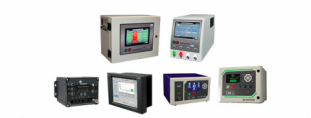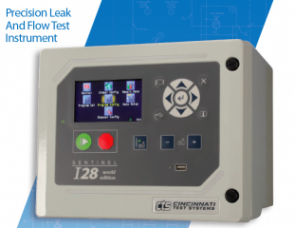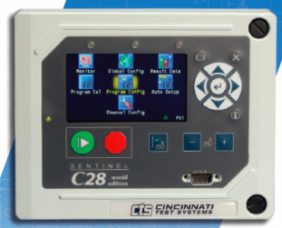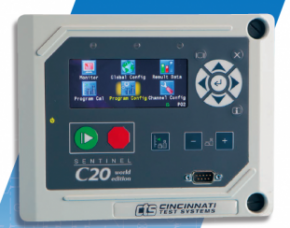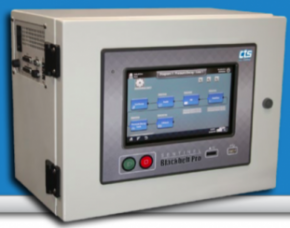CTS Product - Cincinnati Test System
การตรวจสอบรอยรั่วโดยวิธีความดัน (pressure-pressure decay method)
วิธีการทดสอบรอยรั่วของการปิดผนึกบรรจุภัณฑ์โดยใช้ความดนั เป็นการทดสอบการรั่วของบรรจุภัณฑ์โดยใช้วิธีการวัด ความดัดที่ลดลง โดยสามารถวิเคราะห์ภายใต้ระบบความดันหรือสญูญากาศ ซึ่ง ประกอบด้วยสองขั้นตอนหลักๆ คือ
1. การวิเคราะห์แรงดันท่ีบรรจุภัณฑ์สามารถต้านทานได้ ( Burst/Seal Strength) โดยการใส่ความดันอากาศ (air pressure)เข้าไปในภาชนะจนระเบิด(burst)แล้วบันทึกค่าความดันท่ีบรรจุภัณฑ์ต้านทานได้ซึ่งใช้ในการประเมินวัสดุบรรจุชนิด ใหม่รวมถึงเทคนิคการปิดผนึก โดยทั่วไปขั้นตอนนี้ใช้เวลาเพียงระดับวินาที
2. การวิเคราะห์การรั่ว (leak) โดยการใส่ความดันเข้าไปในบรรจุภัณฑ์ที่บรรจุภัณฑ์ ต้านทานได้และวิเคราะห์การลดลงของความดันซึ่งการลดลงดังกล่าวจะขึ้นอยู่กับขนาดของรูบนบรรจุภัณฑ์ที่แสดงถึงการรั่ว และความแตกต่างของความดันภายนอกและภายในบรรจุภัณฑ์ (pressure differential) อย่างไรก็ดีวิธีนีไ้ม่สามารถบ่งชี้ตาแหน่งที่เกิดรอยรั่วได้ ที่เราเลือกว่า เครื่องทดสอบรั่ว Air Leak Tester
โดยจากการทดสอบดังกล่าว ทาง CTS - Cincinnati Test System (CTS air leak tester เครื่องตรวจสอบรั่ว) เป็นผู้เชียวชาญในการทดสอบด้วยหลักการดังกล่าว โดยเครื่องมือดังกล่าวผลิตจาก USA ได้มาตราฐานระดับโลก
Pressure Testing Units
When it comes to integration of a pressure test unit into your assembly verification application, turn to Cincinnati Test Systems (CTS). With over thirty years of experience in design and build, along with our integration of pressure test applications using methods like hydrostatic testing to proof testing, and ranging from 5 inches of water to 30,000 PSI, you can rest assured your test performance is optimized with the utmost safety in mind.
- Hydraulic and Hydrostatic Testing CTS can design, build, and integrate low and high pressure hydrostatic testing applications used for burst, leak, flow, calibration, or integrity test of customer’s parts while collecting detailed data for test evaluation.
- Occlusion Testing A common technique used in detection of blockage within the part under test. The test uses constant applied pressure from a fixed source to detect open or partially closed (blocked) states by measuring and recording backpressure at the inlet (upstream) of the part at the end of a fixed time period.
- Pressure Rise/Increase Testing Pressure test units used for multiple purposes including detection of leakage from a part or to detect restrictions/blockage within the part under test. The test, in most cases, operates by measuring any rise in pressure on the lower pressure side of a barrier or wall designed to be sealed off from a higher pressure side (sometimes a chamber around a filled or sealed tested part).
- Proof Testing A technique used to stress the part under test to ensure it was capable of maintaining a certain level of pressure or vacuum and hold that for a period of time without gross failure. The test operates by ramping pressure or vacuum to the test part at a fixed rate for a fixed period and then holding that final pressure for an additional fixed time period. Any drop below a minimum pressure level indicates the part has failed.
- Ramp to ∆P Event Testing Often used to test check valves, pressure relief valves or other products designed to drastically change state (vent or seal) when pressure is increased or decreased. This pressure test is also often used for burst testing. The test operates by ramping pressure to the test unit part up or down at a fixed rate until a sudden change of pressure is seen on the inlet of the part (detecting the change in state or “event”). Any event detected above or below the expected range of final event inlet pressures is failed.
- Pressure Decay/Vacuum Decay Testing This is the single most common pressure test unit used in leak testing today. The test fills or charges the part to a target pressure, isolates that pressure, and measures the decay of pressure over a fixed time period. The final result can be displayed in: Leak Rate, ∆P or ∆P/∆T.
CTS has had extensive experience in pressure testing Automotive, Medical, Consumer Goods, Energy, Military, Transportation, and other industry applications for more than 30 years. We will work with you to determine the best method to use, whether it is one of our pressure testing units or other some other method to achieve your testing goals.
Contact Us to start working with our team of engineers to help you develop a pressure test unit specifically suited to your needs
-
Sentinel I28 Leak Detection System - เครื่องทดสอบรั่ว (Air Leak tester) Cincinnati Test Systems’ Sentinel I28 is one of the most advanced multi-functional test instrument on the ma...
-
Sentinel C28WE -เครื่องทดสอบรั่ว (Air Leak tester) The Sentinel C28WE pressure decay or vacuum decay instrument is Cincinnati Test System’s latest addition to the technologically a...
-
Sentinel C20WE (World Edition)-เครื่องทดสอบรั่ว (Air Leak tester) The Sentinel C20WE (World Edition) is a high performance, low cost, quality pressure decay leak detection instrume...
-
Introducing the Sentinel Blackbelt Pro -เครื่องทดสอบรั่ว (Air Leak tester) ... The Next Generation of Multi-Test Instrumentation The Sentinel Blackbelt Pro™ is our Next Generation ...

